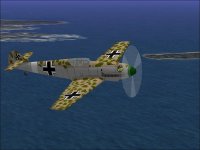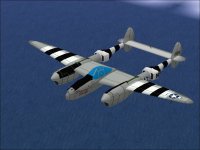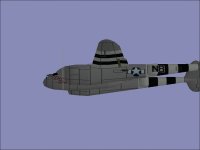a couple posts to reply to;
your old man's disease comment made me smile.
it's too true, and it's not just a guy thing,
although, it seems our cases are much more acute.
heck, come to think about it, i've always had it.
at least, as far back as i can remember.
about the knife edge maneuver;
never tried it, but, most likely, will. shortly
have you tried it in a jet?
granted, pilot skill is essential, but,
controller sensitivity (or lack there of) comes to mind.
for example, go into settings, game controllers... properties.
does the + in the X Axis/ Y Axis window bounce around a bit?
how about the rudder Axis? does it bounce?
and notice that the axis' move when you simply
put your hand on the controller.
another control issue i find aggravating;
is it just me, or does anyone else find
it difficult to just fly straight and level?
it doesn't seem to matter what i'm flying,
although, some aircraft are better than others.
when i attempt to trim, either left/right or up/down,
i can never get it just right. or should i say, correct.
i can get it trimmed close, but,
it always seems to drift one way or the other
and one tap of the trim key usually sends it
in the opposite direction...never centered.
another interesting little quirk i've noticed is,
if i get it trimmed close to straight and level,
sometimes, the trim setting is lost if i maneuver
using the rudder, elevator or ailerons.
then, i have to do the trim process again from scratch.
in the end, the only way i can fly straight
and level is to turn on the auto pilot
which doesn't seem very realistic to me.
dang...there was one more comment i wanted to make,
but, i forgot what it was.
THERE IT IS! i remember, now
i know the excitement of the kill has an effect,
but, my aircraft seems to move all over the place
when approaching a potential victim.
for some reason, i can not keep my aircraft stable for the shot.
the slightest controller movement seems to over compensate
and i invariably loose my position on the target.
and yes, i have tried backing off the controller axis' sensitivities.
i've even tried using the keyboard
instead of a controller button to fire the guns.
that helps a bit, but doesn't solve the problem.
bottom line, is it an inadequacy of the old sim,
a controller issue, pilot error, or possibly,
a combination of all these factors?








